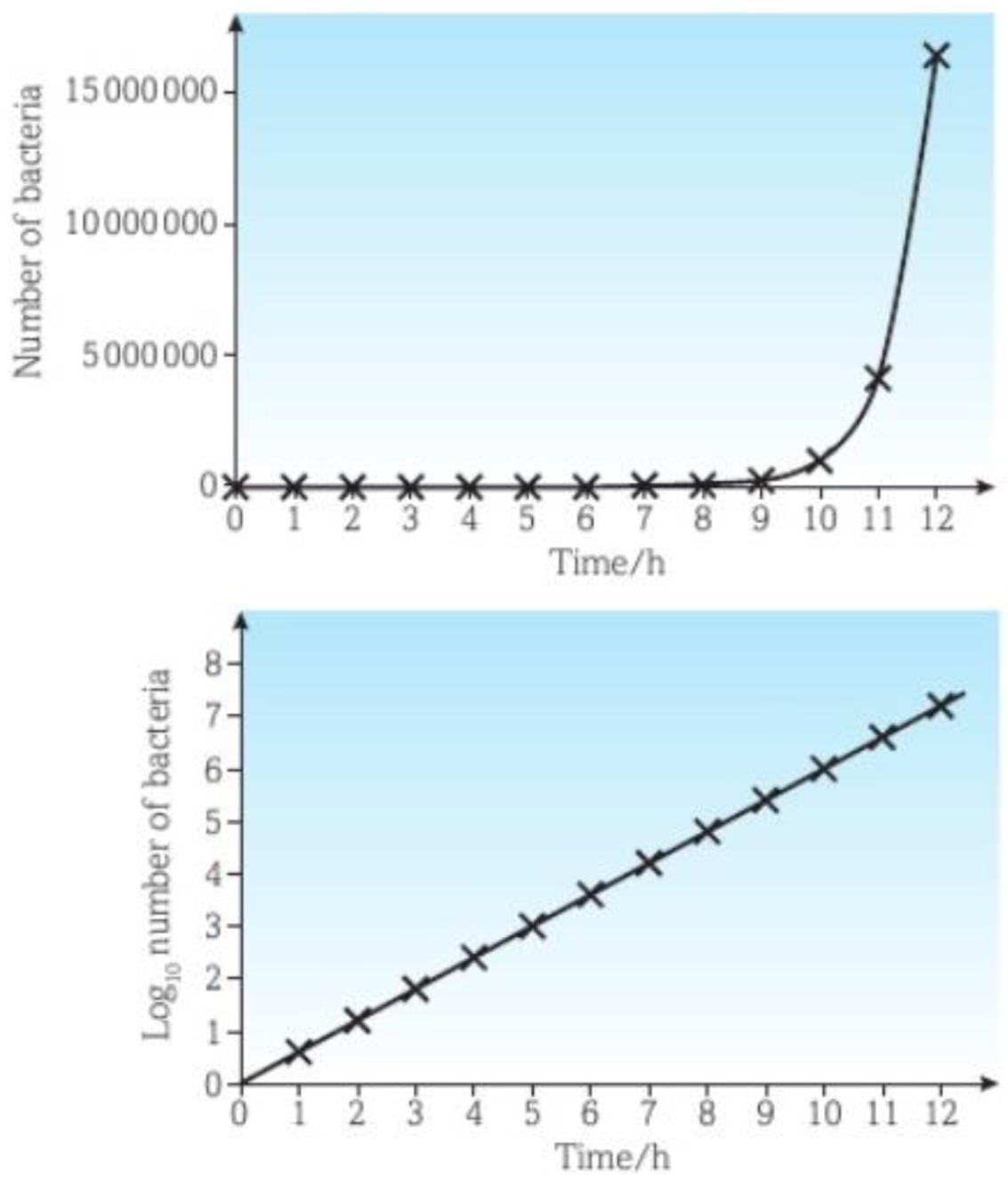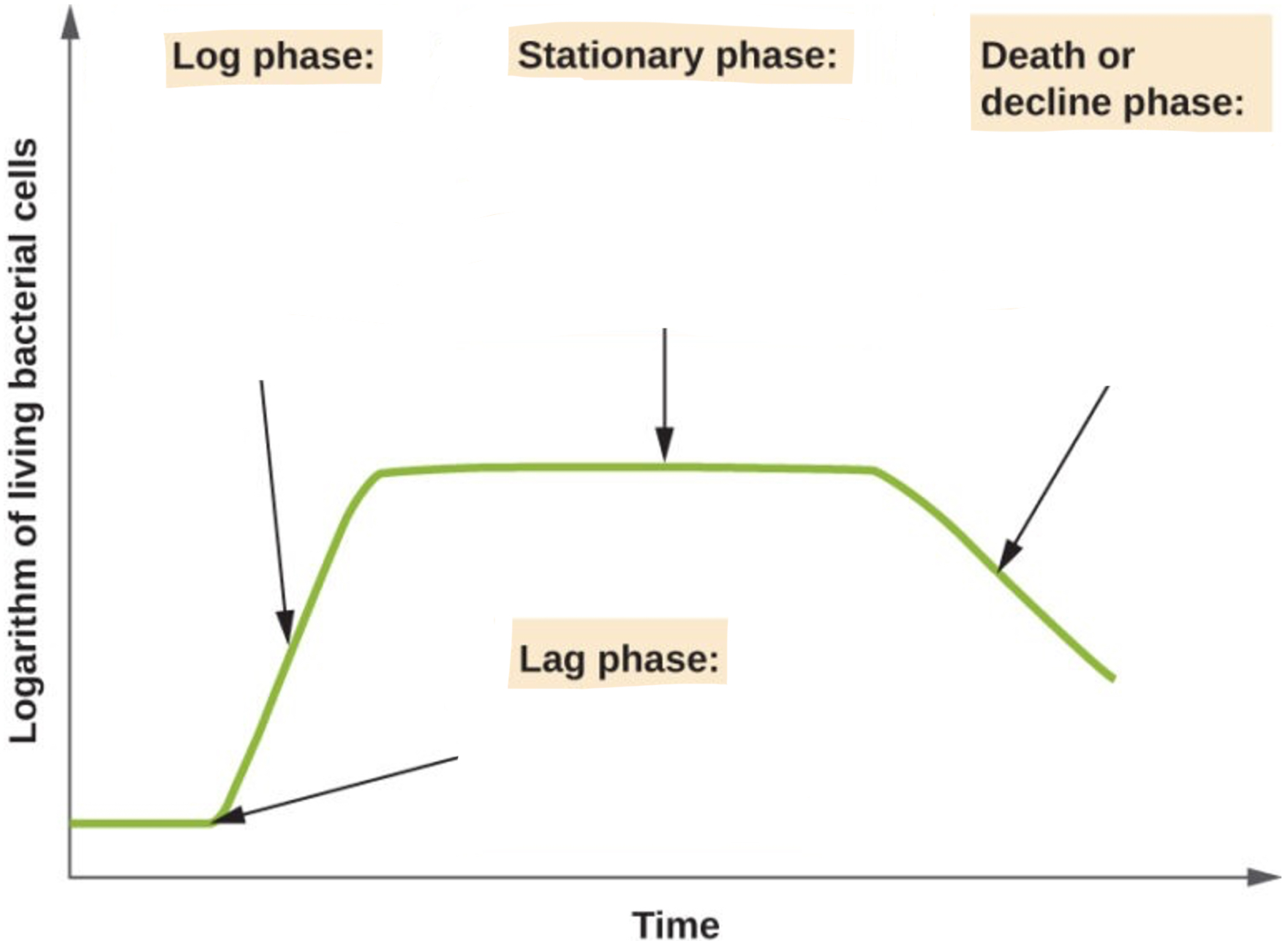3. pattern of growth
1/12
There's no tags or description
Looks like no tags are added yet.
Name | Mastery | Learn | Test | Matching | Spaced |
|---|
No study sessions yet.
13 Terms
GROWTH OF BACTERIAL COLONIES
generation time- time between bacterial divisions
at first no. of bacteria in a colony can increase exponentially (doubling each cycle)
limited nutrition/space and a build up of waste products then slows reproduction and growth
LOGARITHMIC SCALE
used to work with large sets of data
log numbers are used because diff in no. from initial organisms and billions of descendants is too great to represent on a graph using standard no.
LOGARITHMIC SCALE- GRAPH
top graph shows bacterial no. against time
as the scale is so large on y-axis it’s difficult to see bacterial growth
when no. are converted to logarithms (log10) a clear trend of growth can be seen and represented
as only y-axis values have been converted we call this a semi-logarithmic graph
means each no. on y-axis represents a power of 10 (10^n) (e.g. 1 = 10^1 or 10)

NO. OF BACTERIA IN A POPULATION AT A GIVEN TIME- FORMULA
can calculate no. of bacteria in a pop at a given time using that formula
where:
Nt = the number of organisms at a time t
N0 = the number of organisms at time 0
k = the exponential growth rate constant
t = the time the colony has been growing

EXPONENTIAL GROWTH RATE CONSTANT- FORMULA
no. of times a pop will double in 1 unit of time

PHASES OF BACTERIAL GROWTH
lag phase
log phase
stationary phase
death phase
LAG PHASE
bacteria are adapting to new env and aren’t yet reproducing at a measurable rate
LOG PHASE
also known as exponential phase
rate of reproduction is at or close to its theoretical max rate (doubling in a time period)
STATIONARY PHASE
total growth rate is 0
no. of cells made is equal to no. dying
DEATH PHASE
reproduction has almost stopped and death rate is increasing
BACTERIAL GROWTH CURVE

REASONS FOR SLOWING GROWTH RATE- 1
REDUCTION IN AVAILABLE NUTRIENTS
at the start, nutrients are in excess but as exponential growth occurs, excess is used up
unless more nutrients are added there will not be enough to support further growth and reproduction
limits growth of bacteria
REASONS FOR SLOWING GROWTH RATE- 2
BUILD UP OF WASTE PRODUCTS
at the beginning, bacterial waste products in growth medium are minimal
as cell no. start to increase, build up of toxic substances becomes sufficient to inhibit further growth
can even poison and kill the culture
CO2 build up from respiration has a particularly neg effect
causes the pH to fall to a point where bacteria can no longer grow